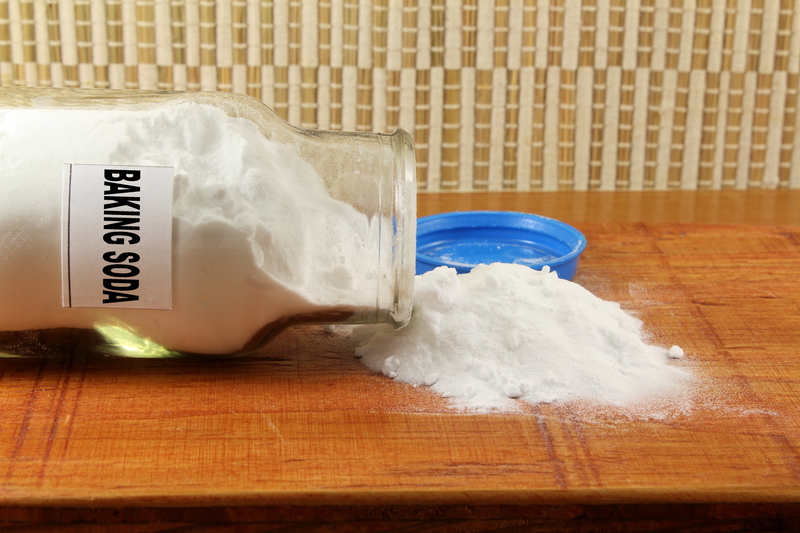A New Standard of Freshness: No More Pet Odors
Posted on 11/09/2025
A New Standard of Freshness: No More Pet Odors
Pet ownership brings immense joy, unconditional love, and companionship. But, as every pet parent knows, it also brings a not-so-welcomed houseguest: persistent, unpleasant pet odors. These odors can permeate fabrics, carpets, and even the air, creating an environment that feels less than fresh. With advancements in cleaning solutions, technology, and home care habits, we can now set a new standard of freshness in our spaces, ensuring pet urine odor removal and long-lasting freshness.
Why Pet Odors Are a Persistent Problem
Whether you have a mischievous kitten or a loyal old dog, lingering pet smells seem to defy all regular cleaning attempts. Common sources of pet-related odors include:
- Urine stains and accidents that are absorbed into carpets or furniture fibers.
- Pet dander and saliva that accumulate on surfaces and fabrics.
- Wet fur or skin conditions that leave behind a musty smell.
- Litter boxes, cages, and pet bedding that trap smells.
Traditional cleaning methods--air fresheners, basic sprays, or generic detergents--typically mask the smell rather than eliminating pet odors at their source. Over time, these odors intensify and become more difficult to fully eradicate.

The Health & Comfort Consequences of Pet Odors
Unpleasant animal smells aren't just a matter of embarrassment or inconvenience. They can affect the well-being of both humans and pets in various ways:
- Allergies and respiratory problems: Pet dander and protein-based odors can aggravate allergies and cause respiratory issues in sensitive individuals.
- Reduced indoor air quality: Accumulated pet odors and airborne particles degrade the overall air quality, potentially impacting sleep and comfort.
- Social discomfort: Strong pet odors can deter guests and even influence perceptions of cleanliness and hospitality.
- Pet behavior: Animals may re-mark spots that weren't adequately neutralized, perpetuating the cycle of odors.
Clearly, achieving odor-free freshness is about much more than appearances--it's about creating a healthy, nurturing home environment.
Modern Solutions: How to Get Rid of Pet Odors for Good
Introducing a New Standard: Elimination Over Masking
Recent advancements in odor control are shifting the paradigm from covering up smells to elimination at the source. Let's explore the most effective, science-backed strategies for pet odor elimination:
1. Enzyme-Based Pet Odor Neutralizers
Enzymatic cleaners are specifically formulated to tackle organic stains and smells, including urine, feces, and vomit. These products use targeted enzymes to break down the odor-causing proteins, effectively neutralizing odors rather than just covering them up.
- Best for: Fresh accidents and deep-set stains
- How to use: Apply generously, let it dwell for the recommended time, blot, and air dry.
- Pro tip: Always patch test on delicate fabrics or finishes.
2. HEPA Air Purifiers for Pet Odor Control
High-Efficiency Particulate Air (HEPA) purifiers can dramatically improve indoor freshness by filtering out pet dander, hair, and odor molecules. Many models now incorporate activated carbon filters that specifically target and remove airborne odors.
- Best for: Homes with multiple pets or ongoing odor issues.
- Supplemental benefit: Helps reduce allergens for sensitive family members.
3. Deep Cleaning Carpets and Upholstery
Carpets, rugs, and upholstery act as sponges for pet smells. Regular vacuuming with a powerful pet vacuum and the use of steam cleaners can work wonders in restoring a fresh-smelling home. Focus on areas where pets sleep, play, or have had accidents in the past.
- Frequency: Deep clean at least every 3-6 months, or more often for high-traffic zones.
- Don't forget: Throw pillows, draperies, and other textiles require periodic attention too.
4. Smart Litter Box Solutions
Cat owners know that litter box odor is a unique and ongoing challenge. Modern litter boxes feature:
- Self-cleaning mechanisms to minimize odor buildup.
- Odor-sealing hoods or doors.
- Odor-absorbing litter and liners with baking soda or activated charcoal.
Regular scooping (ideally daily) and monthly box replacement are essential habits for a truly odor-free standard.
5. Pet Grooming and Hygiene Routines
A clean pet is a less odorous pet. Bathing (using pet-safe shampoo), frequent brushing, and cleaning your pet's paws after outdoor walks can all reduce the transfer of smells into your living space.
- Check ears, teeth, and undercoat for signs of infection or buildup.
- Schedule regular professional grooming for double-coated or long-haired breeds.
Emerging Technologies: The Future of Pet Odor-Free Homes
Innovation continues to redefine freshness standards in pet households. A new wave of smart, integrated solutions is offering multi-layered protection:
- Ozone generators: These devices release ozone to break down odor particles, though they must be used cautiously and in accordance with safety guidelines.
- Antimicrobial sprays: Provide ongoing protection against the proliferation of odor-causing bacteria on hard and soft surfaces.
- Smart home air quality monitors: Alert you to spikes in air contaminants, allowing for proactive intervention.
As these technologies become more accessible, the expectation for consistently odor-free pet homes will continue to rise.
Addressing the Unique Challenges of Multi-Pet Homes
With more pets, the challenge grows exponentially. Multi-pet households need double the vigilance, but following specific routines can help maintain a refreshingly clean home:
- Stagger grooming and cleaning schedules for each pet.
- Separate pet zones (feeding, sleeping, playing) to contain odors.
- Increase frequency of bedding and toy washes.
- Invest in large-capacity air purifiers and odor-neutralizing supplies.
Eco-Friendly and DIY Approaches to Pet Odor Neutralization
For those who prefer green cleaning solutions or need quick fixes when commercial products aren't on hand, consider these methods:
- Baking soda: Sprinkle on carpets or pet beds, leave overnight, and vacuum for natural deodorization.
- White vinegar: Mix with water for a spray that neutralizes acidic urine odors on hard surfaces.
- Hydrogen peroxide (3%): Works on tough spots but requires a patch test to avoid bleaching.
- Essential oils: Use caution--some can be toxic to pets. Only use pet-safe varieties, highly diluted, and never on surfaces pets may lick.
Tip: Always remove as much of the organic matter (urine, vomit, hairballs) as possible before applying your deodorizer for best results.
Maintaining the Freshness: Practical Prevention Tips
Consistent routines create an environment where offensive pet smells never get a chance to develop. Adopt these pet odor prevention tips:
- Establish a cleaning schedule for floors, upholstery, and pet accessories.
- Remove soiled items (bedding, pads, toys) promptly from living spaces.
- Ventilate--open windows when possible, and use fans to refresh air.
- Opt for washable, odor-resistant materials for pet beds and blankets.
- Train pets early and address marking/housebreaking issues promptly.
Choosing the Right Pet Odor Solution: What to Look For
The market is full of products claiming to offer lasting odor control for pets. However, the most effective solutions share some common attributes:
- Non-toxic and pet-safe formulas: Ensure safety for all household members.
- Long-term effectiveness: Look for reviews highlighting sustained freshness.
- Multi-functional use: Versatility for use on carpets, upholstery, beds, and hard floors.
- Minimal artificial fragrance: Overly perfumed air fresheners often just cover up pet odors temporarily.
To maintain the new standard of true home freshness, select products that neutralize rather than mask, and combine them with smart cleaning routines.
Busting Myths: What Doesn't Work for Pet Odors
Not all "tricks" are effective or safe! Avoid these common pitfalls:
- Relying solely on air fresheners. These add fragrance but rarely deal with the root cause.
- Using harsh chemicals or bleach. They can damage fabrics, harm pets, and do not neutralize organic odors.
- Ignoring small stains or "hidden accidents." Even one missed spot can kickstart a recurring odor problem.
- Assuming pets outgrow marking behaviors. Most require consistent training and reinforcement.

Setting a New Freshness Standard--The Benefits
When you commit to eliminating pet odors at their source, you unlock benefits that go beyond a pleasant-smelling home:
- Better health for both humans and animals, thanks to cleaner air and hygienic surroundings.
- Improved comfort and peace of mind for residents and visitors alike.
- Longer-lasting home finishes and less wear on carpets, upholstery, and flooring.
- Pride in your living space: No more apologizing for "pet house smell."
Conclusion: Embrace a New Standard of Freshness--No More Pet Odors
Our furry friends deserve to share our homes without bringing unwelcome smells. By leveraging a full spectrum of modern solutions, innovative technologies, and strategic cleaning routines, every pet owner can enjoy an odor-free, naturally fresh living environment. Start by targeting pet odors at their source and maintaining consistent cleanliness--your nose (and your guests) will thank you. Adopt this new standard of freshness and say goodbye to pet odors, for good.



